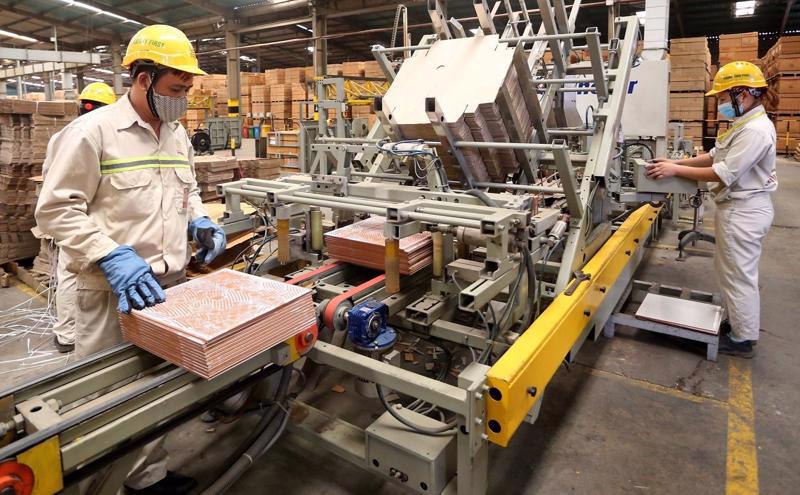The S&P Global Vietnam Manufacturing Purchasing Managers’ Index (PMI) remained below the 50.0 no-change mark during October, declining to 49.6 from 49.7 in September, according to the S&P Global survey released on November 1.
The reading signaled a second consecutive monthly deterioration in the health of the sector. Central to the latest decline in business conditions was a further reduction in manufacturing output; the second in as many months. The latest fall was only slight, as some firms increased production in line with new order growth, but on balance firms were able to cater to customer requirements without expanding their output.
Overall business conditions in Vietnam’s manufacturing sector deteriorated slightly in October as firms continued to scale back production despite modest improvements in new orders.
More positively, employment stabilized after a period of job shedding, and firms continued to increase their purchasing activity amid optimism in the outlook for the year ahead.
A combination of higher oil prices and currency weakness resulted in the pace of input cost inflation accelerating for the second month running, with output prices increasing accordingly.
New orders rose for the third month running amid some signs of improvement in customer demand. That said, the rate of growth was only marginal and the weakest in the current sequence of expansion. Anecdotal evidence suggests that clients remain hesitant about committing to new orders. Growth in new export orders also softened over the month, but remained more pronounced than that seen for total new business.
Employment was broadly unchanged at the start of the final quarter of the year, thereby ending a seven-month sequence of falling staffing levels. Panelists that increased their workforce numbers did so in response to higher new orders, while there remained a climate of optimism about the year-ahead outlook for production.
The stability of employment and ongoing spare capacity in the sector enabled manufacturers to markedly reduce their backlogs of work in October. Furthermore, the rate of depletion was the strongest since June 2021.
A further build-up of inflationary pressures was signaled at the start of the fourth quarter, with both input costs and output prices rising at sharper rates. In fact, the respective rates of inflation each hit eight-month highs.
The impact of rising oil prices was widely mentioned as having pushed up input costs, with higher prices for fuel and plastics among those feeding on from rises in the cost of oil. Meanwhile, a depreciation in the Vietnam dong against the US dollar added to cost pressures. In turn, firms increased their own selling prices at a solid pace.
Purchasing activity continued to rise solidly, expanding for the third month running amid efforts to build reserves of inputs ahead of expected increases in production. These efforts were often in vain, however, as signaled by a further reduction in stocks of purchases.
Stocks of finished goods were also down as manufacturers opted to use inventories to meet new orders rather than expand production. The second consecutive monthly fall in post-production inventories was modest, but the most marked since January.
Finally, the improvements in suppliers’ delivery times that have been recorded since the start of the year continued in October amid reports of spare capacity at vendors. That said, the shortening of lead times was the least marked since April.
“PMI data for the start of the final quarter of the year painted a similar picture to that for the end of the third quarter,” said Mr. Andrew Harker, Economics Director at S&P Global Market Intelligence. “New orders continued to rise, but only at a modest pace and one that wasn’t sufficient to encourage firms to expand their production. Instead, manufacturers were content to draw down inventories of finished products to satisfy demand.”
“There was some more positive news on the employment front as a seven-month period of job cutting came to an end,” he went on. “This, along with rising purchasing and positive sentiment, suggests that firms are becoming more confident that recent demand improvements will be sustained in the months ahead.”
“The other noteworthy development in October was a further intensification of inflationary pressures, with higher oil prices and currency weakness pushing up input costs.”









 Google translate
Google translate